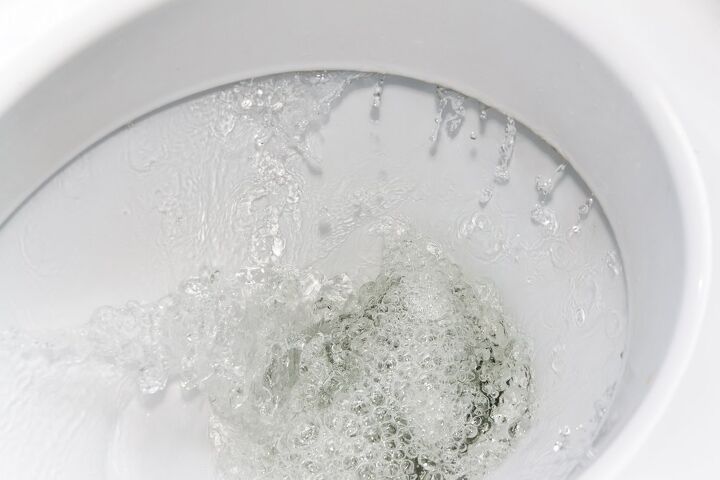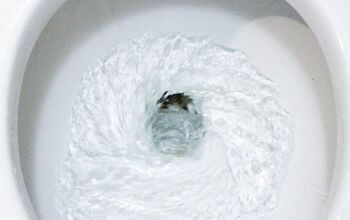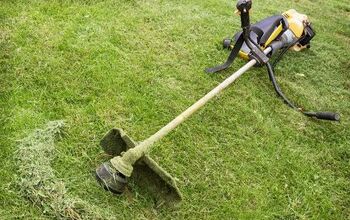Why The Toilet Won't Stop Running? (Possible Causes & Fixes)

It isn’t everyday that you run into an issue with your toilet. Unless objects get accidently flushed, or there is an issue with your water supply, most toilets are generally very low maintenance. Occasionally, however, your toilet may malfunction, leaving you with concern and no idea of how to fix the problem– or what the problem even is. One of the most common problems with toilets is that, after flushing, they don’t stop. That is, the water continues to swirl for a prolonged period of time.
When your toilet won’t stop running, you risk wasting hundreds of gallons of water or more. If this is a recurring problem, and your toilet doesn’t stop running frequently after you flush, you are likely costing yourself hundreds of extra dollars on your water bill.
If your toilet won’t stop running it could be due to a bad or tangled flapper chain, a flapper that is warped or broken, the float being at the wrong height, or a loose flushing lever. To diagnose this more fully, open the lid of the toilet and evaluate each part while you flush to determine if the flapper comes up and reseats fully as expected.
Sometimes, a toilet that won’t stop running is a one-time problem, and for others, it happens frequently. There are a number of reasons why the toilet won’t stop running. Some require extensive maintenance and others can be fixed easily. Either way, you won’t be able to use the toilet while it is still running, so it is important that you fix it as soon as possible.
Do You Need to Install or Repair a Toilet?
Get free, zero-commitment quotes from pro contractors near you.

How Does a Toilet Work?
Before we discuss why your toilet might be malfunctioning, let’s go over how the toilet works. There are a few main parts that every toilet has, and they all work in the same general way. Toilet parts to identify before assessing why your toilet is running:
- Flapper
- Flapper Chain
- Flushing Lever / Valve
- Floater
- Fill Valve
- Tank lid
When you push down on the knob that flushes the toilet, water rushes into the tank that can be seen when the tank lid (not the toilet seat) is lifted. Then, something called a flapper gets lifted up until the water reaches a certain level. The flapper causes the water in the tank to rush into the toilet bowl, which flushes away the contents of the toilet.
When the water rushes from the tank into the bowl, the flapper will sink back down onto the flush valve, closing off the supply of water going into the bowl, and water begins to come back into the tank. So, to recap, the flapper gets lifted when the toilet is flushed, which makes water rush from the tank into the bowl, and as the flusher lever slowly rises back up, the flapper lowers back into place, stopping the water from rushing into the bowl. As there are a lot of moving parts here, including your plumbing and water supply, there could be several causes as to why your toilet is malfunctioning.
Reasons Why the Toilet Won’t Stop Running
There are many possibilities as to why your toilet won’t stop running. If this issue occurs along with other issues, you may have a more complex reason as to why your toilet keeps running. If the toilet simply keeps running, you can probably fix it quite easily without having to worry about paying a repairman. These are some common reasons why the toilet keeps running after you flush it:
- The flapper chain or the flush valve is broken. The flapper chain is what connects the flushing valve to the flapper. Again, when you push down on the lever to flush the toilet, the chain attached to the lever lifts the flapper up, allowing water to flow. If the chain is broken, the flapper will not move, and the toilet will not flush. If the chain is too short or tangled, the flapper will not lower properly and water will continue to rush.
- The flapper is warped or broken. With regular wear and tear, the flapper itself may become warped or broken, and will not fit correctly into the valve that stops water from flowing. Thus, water will continuously flow, driving up your water bill.
- The float is at the wrong height. The water level inside the toilet tank is controlled by a float, which signals for the water to stop running once it reaches a certain level. If the float is set too low, it creates a weak flush. If it’s set too high, water will spill into the overflow tube and continually run.
- The flushing lever is loose or broken. If the flusher is not screwed in properly, or becomes detached from the flapper chain, your toilet may malfunction. The flusher lever and the flapper must be securely attached in order for water to flow and stop flowing at the right time.
How to Fix a Toilet That Won’t Stop Running
Once you assess what might be wrong with your toilet, fixing it is quite simple. To fix a toilet that won’t stop running, you might need:
- Rubber gloves
- A new flapper that fits your toilet
- A new flapper chain that is longer or shorter than your current one
- Pliers
- A versatile screwdriver
- A garbage pail
- Food coloring or dye tablet
Step 1: Observe the flapper and chain. Is the flapper hanging just above the valve? If so, it is not going to seal in the water properly, and this will cause the water to continue to run. Replace the chain with a longer one. If the chain is detached or too long, the flapper will remain in place, and water will not flush out. Again, replace the chain.
Step 2: Check the flapper. If the flapper is broken or warped and not fitting properly, first turn off the water supply to the toilet. Next, drain the water from the bowl by pressing and holding the flusher. You will need a new flapper and a pair of rubber gloves. Remove the old flapper from the chain and install the new flapper onto the chain. Turn the water supply back on, and as the tank refills, no water should continue to leak out.
Step 3: Check the float level. If the water is too high, that is likely why the toilet keeps running. This means you will have to lower the float. Loosen the screw that holds the float in place until it lowers.
Step 4: Adjust the flusher level. When you push down on the flusher, it should feel firm enough to move down and slowly move back up on its own. If it feels loose, and doesn’t rise back up on its own, remove the lid of the toilet. Then, check the screws that hold the flusher in place. Once tightened, the flusher should work normally, and the toilet should be able to flush properly. If not, you may need to replace the flusher entirely, as it may have become warped with use.
Other Ways to Assess a Malfunctioning Toilet
When a toilet won’t stop running, there are very telling signs. The sound of the toilet flushing can be heard constantly, and the water in the bowl will continue to flush around. However, your toilet may be malfunctioning without showing obvious signs until it is too late, and you have already incurred a lot of expensive damage.
Many of the aforementioned complications can cause a toilet to leak in a way that is more subtle than a constantly running toilet, but are just as damaging and wasteful. If you suspect that your toilet could be leaking, open the lid of the toilet. Then, put a drop of food coloring or a dye tablet into the water in the tank and wait 10 to 20 minutes. Next, inspect the water inside of the toilet bowl. If you notice dye-colored water seeping down into the toilet bowl, your toilet is leaking and you must ensure that the flapper is working properly.
A silently leaking toilet is particularly inconvenient, as the problem may go on for a very long period of time before you notice. A leaking toilet can waste up to 200 gallons of water per day! So, it is a good idea to check these parts of your toilet and ensure that everything is working as it should be.
Do You Need to Install or Repair a Toilet?
Get free, zero-commitment quotes from pro contractors near you.

Summing It Up
Usually, when toilets malfunction, it is simply due to normal wear and tear. If your toilet won’t stop running, it is likely due to a common issue that can be easily fixed by anyone with no plumbing experience. Identify the parts of the toilet that need inspection, including the flapper, the flushing lever, the flapper chain, and the floater. Then, identify which part is out of place or broken, and you can easily fix your toilet in no time at all.
If you are having trouble identifying the parts of the toilet, consider searching for a diagram or Youtube video* to help you visualize how the toilet works. This way, you can ensure that you are correctly assessing the issue and fixing your toilet so that you do not run into this problem again. If you fix your toilet, but it continues to keep running, you may have more than one issue, and you should reassess that the other toilet parts are working.

Paige is an elementary school librarian with a passion for writing. Her hobbies include reading an exorbitant amount of fantasy, slowly teaching herself to draw, and home decor. While she isn't the most talented artist or interior designer, what she lacks in skill she more than makes up for in enthusiasm. When she's not curled up with a book, you can certainly find her curled over the keyboard.
More by Paige Hanawalt


















![10 Most Dangerous Neighborhoods in Baltimore [Updated]](https://cdn-fastly.upgradedhome.com/media/2023/07/31/9075655/10-most-dangerous-neighborhoods-in-baltimore-updated.jpg?size=350x220)





![Standard Dining Room Table Dimensions [for 4, 6, 8, 10 and 12 People]](https://cdn-fastly.upgradedhome.com/media/2023/07/31/9074335/standard-dining-room-table-dimensions-for-4-6-8-10-and-12-people.jpg?size=350x220)


